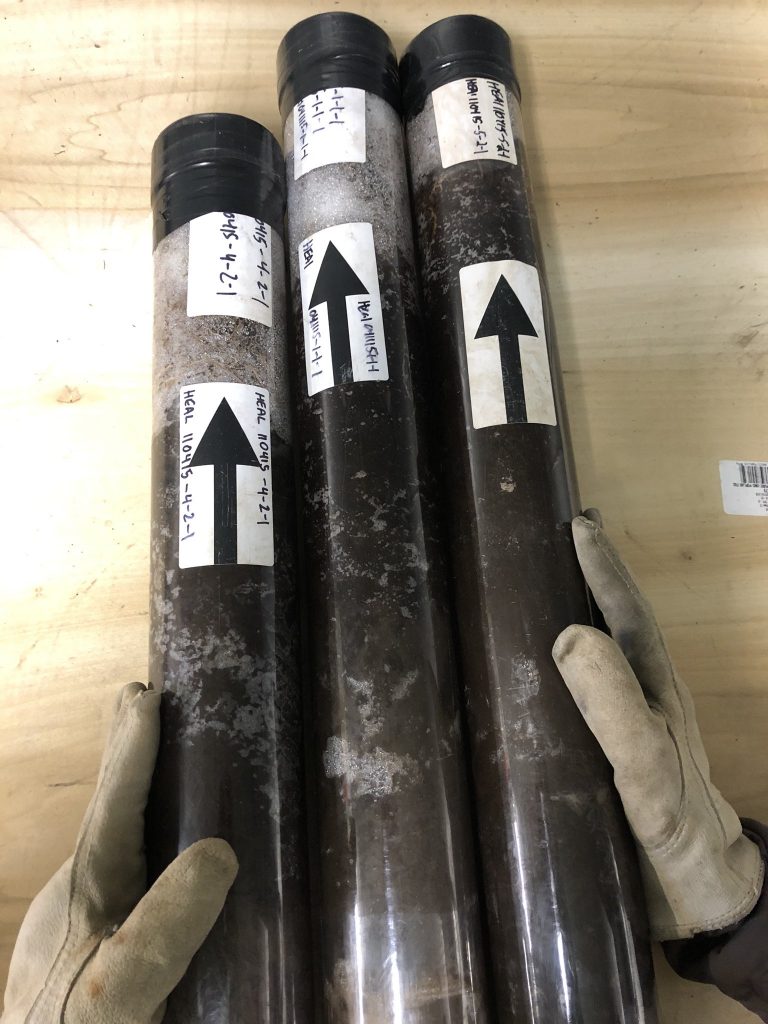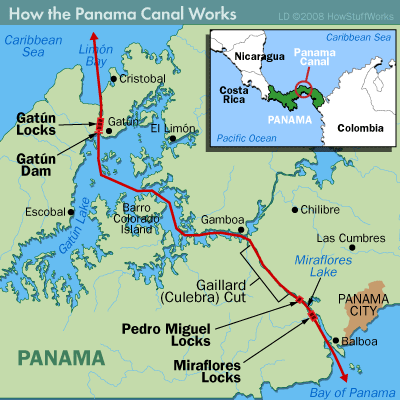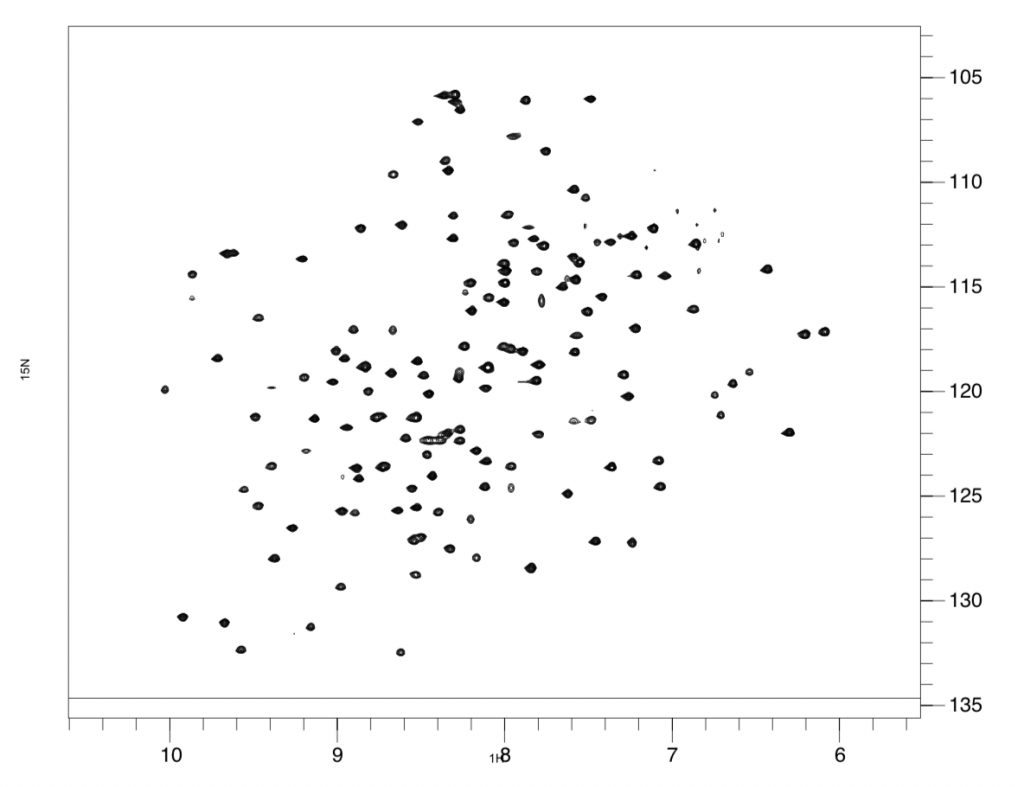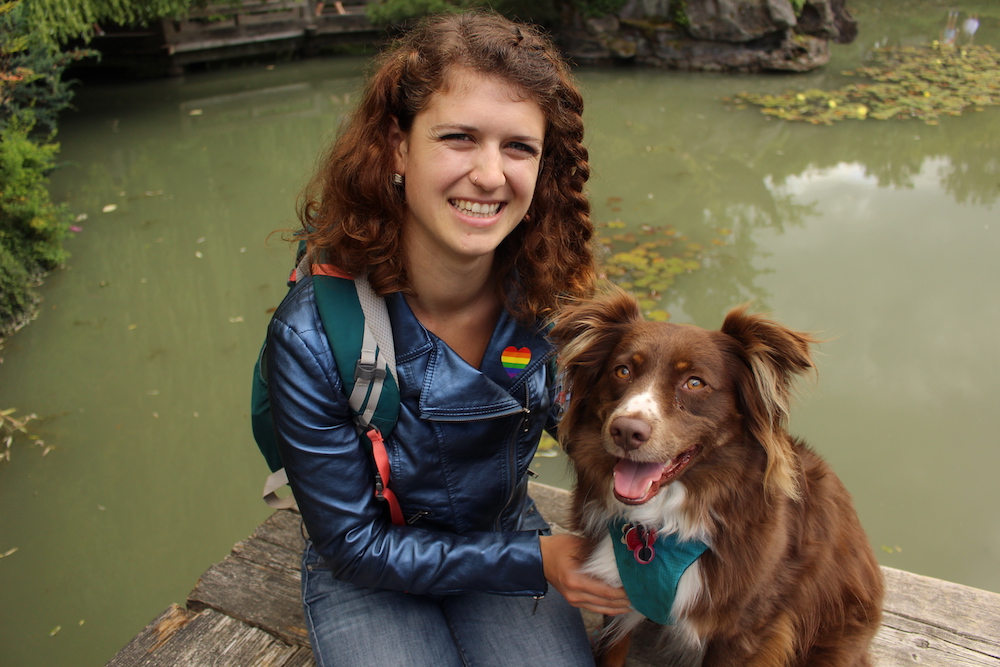For starters, soil and dirt are not the same thing (contrary to my own belief). First of all, dirt is in fact soil that has been removed from its intended location. For example, the stuff on your shoes after you go hiking in the forest or the grit under your fingernails after you go dig around in your garden, that’s all dirt. The stuff that is left untouched in the forest and in the garden, that’s all soil. Secondly, soil is super important for a number of reasons. One of the key reasons being that it has the potential to help us reduce the amount of carbon in our atmosphere on human timescales, and therefore, mitigate the effects of climate change. And Adrian Gallo is right in the nitty-gritty of it all.
Adrian is a 4th year PhD student in the Department of Crops and Soil Sciences working with Dr. Jeff Hatten, who was also his Master’s advisor. While Adrian’s Master’s work was focused on understanding how carbon and water move in Oregon soils under intensive forest management, his PhD is looking at soils from a much wider and more diverse range of habitats and ecosystems. Specifically, the soil cores are from 43 different locations across North America spanning 20 different ecoclimatic zones, ranging from the Alaskan Arctic Tundra to the southern tip of Florida. By analyzing these samples, Adrian is making a continental-scale assessment of soil organic matter and how similar or different it is across these ecoclimatic zones. In particular, Adrian is looking at carbon. Carbon is unique to look at in soils because it is cycling in human timescales, unlike carbon in rocks and oceans, which cycles on geologic timescales. What this means is that essentially we can directly manage and influence the carbon on our landscapes. However, before we can do that, we need to understand why some carbon stays in soil much longer than other carbon (50,000 years vs 1 week) and how different microbes have different abilities to use these different kinds of carbon.
While it may not sound like it to many of us, the work that Adrian is doing is soil-scientifically speaking quite ‘basic’. It is ‘basic’ because soil scientists today are only now realizing how little we actually know and understand about how carbon works and cycles within soil. The reason being that “we were using essentially the same analytical methods for more than 100 years, and our predictions and climate models were built using that data. It’s only in the last 25 years that we have had instruments sensitive enough to test some of these predictions, and in some cases we’ve found that our models are completely wrong.” (NEON Science).
Many of us probably learned about how cycling of elements, such as nitrogen, calcium, and carbon, works in middle school. The terrestrial carbon cycle was likely explained in the following way; a tree grows, its leaves fall, the leaves decompose, the nutrients go back into the soil, the tree uses the nutrients, which includes carbon. However, what Adrian and many other soil scientists are finding is that the carbon cycle isn’t as cyclical as we thought it was, and as we perhaps wish it would. Additionally, our belief that most of the carbon that finds its way into soils is shoot-derived (aka from the leaves or from above the ground) is also being proven flawed, in some part by Adrian’s research. After analyzing the soil cores from his 43 sites, Adrian found that most of the carbon in soil is looking like it is in fact root-derived.



Photos from 24-Jun-2018 when Adrian had to haul his samples across campus to get them from freezers to incubators. Source: Twitter.
You may be thinking to yourself, why should I care about how much carbon is in the soil and where it comes from and how long it stays there. Well, soil is actually the most important terrestrial carbon sink, storing an estimated 4,100 gigatons of carbon globally, which is more than the atmosphere (~590 Gt) and organisms (650 Gt) store. And the truth of the matter is that we want carbon in our soil. In fact, we want a whole lot more in there. Not only would having more carbon in our soil be beneficial to our climate (as we would be capturing and storing more of the atmospheric carbon in our soils rather than have it out in the atmosphere), but it is also beneficial from an agricultural perspective. If you put carbon in soil, it increases its water holding capacity, meaning farmers don’t have to irrigate as much, it increases the amount of nutrients in the soil, and as a consequence of both, it means that a more diverse range of crops can be planted. There are so many downstream benefits of putting carbon back into soil that is has the potential to make farmers much safer in bad drought or flood years.
Another really exciting component of Adrian’s research is how collaborative and interdisciplinary it is. One of the best examples of this is where he got his 43 soil cores from. You see, Adrian didn’t actually have to go to each of his 43 cross-continental sites (which would have been a nightmare temporally, logistically, financially, and many more words ending in -ally). Instead, he and his advisor were able to convince a team of researchers who were already going to these sites as part of an NSF-funded project called NEON (National Ecological Observatory Network), to send him the 1-m average length cores, which the NEON group were actually planning on not using and dumping. Furthermore, Adrian has joined forces with researchers from diverse backgrounds to look at these cores from totally different angles. While Adrian represents the role of chemist in the group, there is also an ecologist, mineralogist, and a statistician, who are all fitting different pieces of the puzzle together.
In Adrian’s own words, “it’s a really exciting time to be in the field of biogeochemistry because that’s basically what soil is – some mixture of biology, the chemistry that is involved, and the parent material– the rock itself–dictates a lot of the reactions that can occur. We have taken that for granted for a really long time but I really enjoy the complexity of it and having specialists come in to look at this problem from lots of different angles has been really great.”.
To hear more about Adrian’s research and also about his journey to OSU and more on his personal background, tune in on Sunday, January 12 at 7 PM on KBVR Corvallis 88.7 FM or stream live. Also, make sure to follow Adrian on Twitter for updates on all things soil and check out a recording of a talk he recently gave at the American Society of Agronomy and Crop Science Society of America joined conference!
[Unfortunately due to a conflict with OSU Athletics schedule promoting a game, this on-air interview did not take place. The podcast/on-air interview will occur later in 2020]























